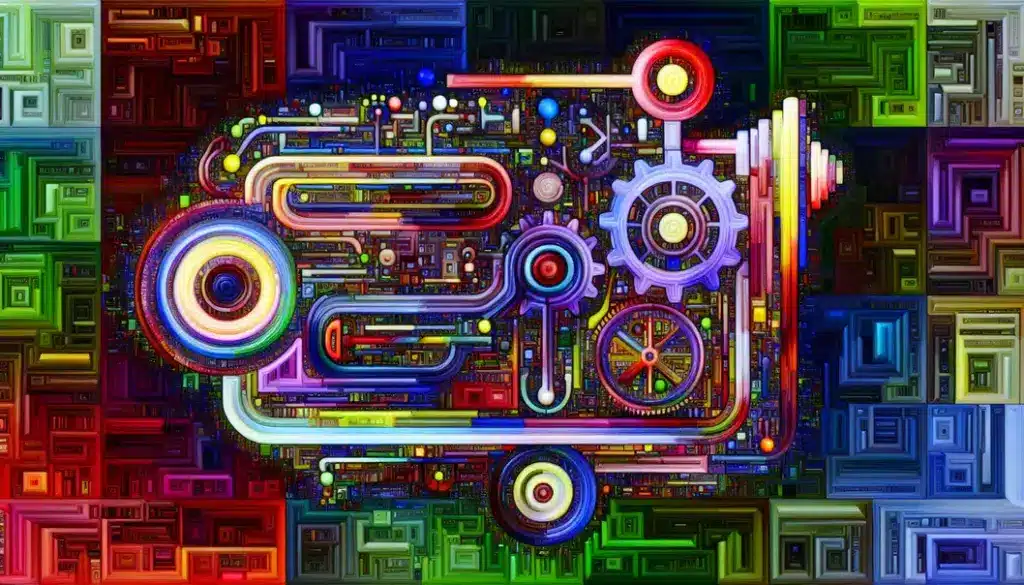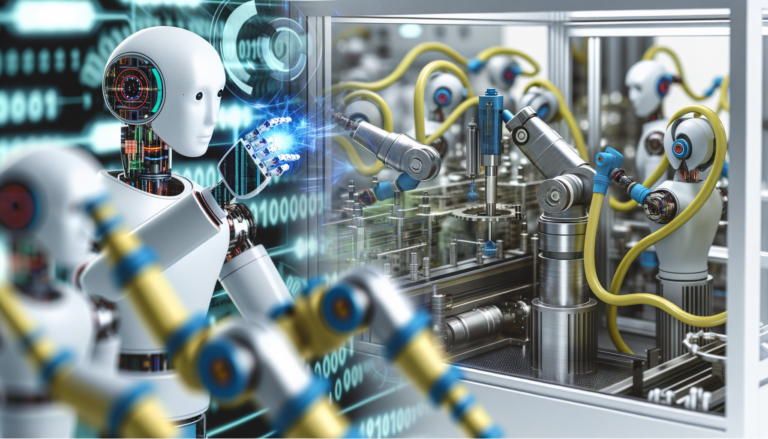The unveiling of OpenAI’s ‘gpt-image-1’ marks a pivotal moment in the realm of AI-driven creativity. This new image generation model not only showcases impressive versatility in style adaptation but also brings to light crucial discussions around ethics and copyright. This exploration will delve into the model’s capabilities and the implications for ethical AI practices.
Technological Features and Capabilities of Open AI New Image Generation Model

1. Harnessing the Power of Multimodal Innovation in OpenAI’s Latest Model
OpenAI’s cutting-edge image generation model, known as gpt-image-1, exemplifies the sophisticated deployment of natively multimodal architectures, integrating both text and image data seamlessly. This robust framework allows the model to generate vivid images that are not only visually compelling but also contextually enriched by its understanding of textual prompts. The versatility of gpt-image-1 is especially evident in its capacity to adopt various artistic styles, from photorealistic to animated, catering to a diverse range of aesthetic preferences.
Incorporating these advanced capabilities, developers can achieve unparalleled creative control, prompting the generation of specific scenes or styles, such as a “sunset over a mountain village.” With its ability to blend rendered images with readable text, the model serves as a powerful tool for innovative applications in both personal content creation and professional design. Furthermore, its availability through the ChatGPT API enhances accessibility, empowering users globally to leverage its features. This integration underscores OpenAI’s commitment to pushing the boundaries of multimodal AI technology.
2. Elevated Image Creation Techniques and Robust Safety Protocols in OpenAI’s Latest Model
OpenAI’s latest image generator, gpt-image-1, elevates image creation with its natively multimodal capabilities, producing styles ranging from photorealism to whimsical art. Its unified post-training stack ensures streamlined updates, enhancing consistency across modalities. Crucially, the model’s in-context learning allows dynamic adaptation to diverse user inputs, improving image specificity and pertinence. Simultaneously, OpenAI has prioritized safety, embedding a rigorous content moderation system within the model. This safeguards against inappropriate content through customizable settings, balancing creative freedom with policy compliance. Integration with Azure AI adds a second layer of monitoring, enhancing real-time abuse detection and response capabilities. Such innovations ensure the model is both cutting-edge and responsibly managed, reflecting OpenAI’s commitment to user security and creativity.
3. Surging Popularity and User Engagement with OpenAI’s gpt-image-1 Model
OpenAI’s gpt-image-1 model exemplifies the rapid embrace of AI technology, evidenced by its soaring user engagement figures. With over 700 million images generated in its inaugural week, the model’s appeal is unmistakable among developers and users seeking creative and versatile image solutions. By offering multimodal capabilities, gpt-image-1 not only generates images but also integrates complex world knowledge, significantly expanding its application scope. The integration via the ChatGPT API has enabled developers to seamlessly incorporate this cutting-edge functionality into their platforms, thus broadening its usage across industries. As market leaders like Adobe consider its potential for enhancing visual content, gpt-image-1 is reshaping conventional notions of creativity and technology. The rapid adoption speaks to an industry in flux, eager to explore AI’s possibilities while cautiously navigating the accompanying ethical considerations.
4. Ethical Dilemmas and Resource Constraints in Adopting OpenAI’s Image Model
The introduction of OpenAI’s gpt-image-1 model signifies a pivotal moment in AI development, offering unprecedented capabilities in image generation. However, its transformative potential is shadowed by significant ethical and resource challenges. The hyper-realistic outputs risk becoming platforms for misinformation, particularly in media and political arenas where distinguishing real from fake is crucial. Concurrently, this technology imposes substantial demands on computational resources, especially with a soaring user base eager to utilize its power.
OpenAI mitigates some ethical concerns by implementing safety mechanisms, yet balancing these with creative liberties remains a delicate task. Moreover, the surge in simultaneous image requests tests the scalability and robustness of existing infrastructure. Addressing these challenges demands strategic investments in technology and the fostering of collaborative governance frameworks, ensuring ethical integrity and operational efficiency.
Technological Features and Capabilities of Open AI New Image Generation Model

1. Harnessing the Power of Multimodal Innovation in OpenAI’s Latest Model
OpenAI’s cutting-edge image generation model, known as gpt-image-1, exemplifies the sophisticated deployment of natively multimodal architectures, integrating both text and image data seamlessly. This robust framework allows the model to generate vivid images that are not only visually compelling but also contextually enriched by its understanding of textual prompts. The versatility of gpt-image-1 is especially evident in its capacity to adopt various artistic styles, from photorealistic to animated, catering to a diverse range of aesthetic preferences.
Incorporating these advanced capabilities, developers can achieve unparalleled creative control, prompting the generation of specific scenes or styles, such as a “sunset over a mountain village.” With its ability to blend rendered images with readable text, the model serves as a powerful tool for innovative applications in both personal content creation and professional design. Furthermore, its availability through the ChatGPT API enhances accessibility, empowering users globally to leverage its features. This integration underscores OpenAI’s commitment to pushing the boundaries of multimodal AI technology.
2. Elevated Image Creation Techniques and Robust Safety Protocols in OpenAI’s Latest Model
OpenAI’s latest image generator, gpt-image-1, elevates image creation with its natively multimodal capabilities, producing styles ranging from photorealism to whimsical art. Its unified post-training stack ensures streamlined updates, enhancing consistency across modalities. Crucially, the model’s in-context learning allows dynamic adaptation to diverse user inputs, improving image specificity and pertinence. Simultaneously, OpenAI has prioritized safety, embedding a rigorous content moderation system within the model. This safeguards against inappropriate content through customizable settings, balancing creative freedom with policy compliance. Integration with Azure AI adds a second layer of monitoring, enhancing real-time abuse detection and response capabilities. Such innovations ensure the model is both cutting-edge and responsibly managed, reflecting OpenAI’s commitment to user security and creativity.
3. Surging Popularity and User Engagement with OpenAI’s gpt-image-1 Model
OpenAI’s gpt-image-1 model exemplifies the rapid embrace of AI technology, evidenced by its soaring user engagement figures. With over 700 million images generated in its inaugural week, the model’s appeal is unmistakable among developers and users seeking creative and versatile image solutions. By offering multimodal capabilities, gpt-image-1 not only generates images but also integrates complex world knowledge, significantly expanding its application scope. The integration via the ChatGPT API has enabled developers to seamlessly incorporate this cutting-edge functionality into their platforms, thus broadening its usage across industries. As market leaders like Adobe consider its potential for enhancing visual content, gpt-image-1 is reshaping conventional notions of creativity and technology. The rapid adoption speaks to an industry in flux, eager to explore AI’s possibilities while cautiously navigating the accompanying ethical considerations.
4. Ethical Dilemmas and Resource Constraints in Adopting OpenAI’s Image Model
The introduction of OpenAI’s gpt-image-1 model signifies a pivotal moment in AI development, offering unprecedented capabilities in image generation. However, its transformative potential is shadowed by significant ethical and resource challenges. The hyper-realistic outputs risk becoming platforms for misinformation, particularly in media and political arenas where distinguishing real from fake is crucial. Concurrently, this technology imposes substantial demands on computational resources, especially with a soaring user base eager to utilize its power.
OpenAI mitigates some ethical concerns by implementing safety mechanisms, yet balancing these with creative liberties remains a delicate task. Moreover, the surge in simultaneous image requests tests the scalability and robustness of existing infrastructure. Addressing these challenges demands strategic investments in technology and the fostering of collaborative governance frameworks, ensuring ethical integrity and operational efficiency.
Final thoughts
As ‘gpt-image-1’ embarks on reshaping digital creativity, it challenges developers and experts alike to navigate its vast potential and inevitable ethical complexities. The future of AI and its applications in art holds promise, yet it demands a conscientious approach to ensure innovation aligns with society’s moral standards.
Ready to elevate your business with cutting-edge automation? Contact AI Automation Pro Agency today and let our expert team guide you to streamlined success with n8n and AI-driven solutions!
About us
AI Automation Pro Agency is a forward-thinking consulting firm specializing in n8n workflow automation and AI-driven solutions. Our team of experts is dedicated to empowering businesses by streamlining processes, reducing operational inefficiencies, and accelerating digital transformation. By leveraging the flexibility of the open-source n8n platform alongside advanced AI technologies, we deliver tailored strategies that drive innovation and unlock new growth opportunities. Whether you’re looking to automate routine tasks or integrate complex systems, Minh Duc TV provides the expert guidance you need to stay ahead in today’s rapidly evolving digital landscape.



